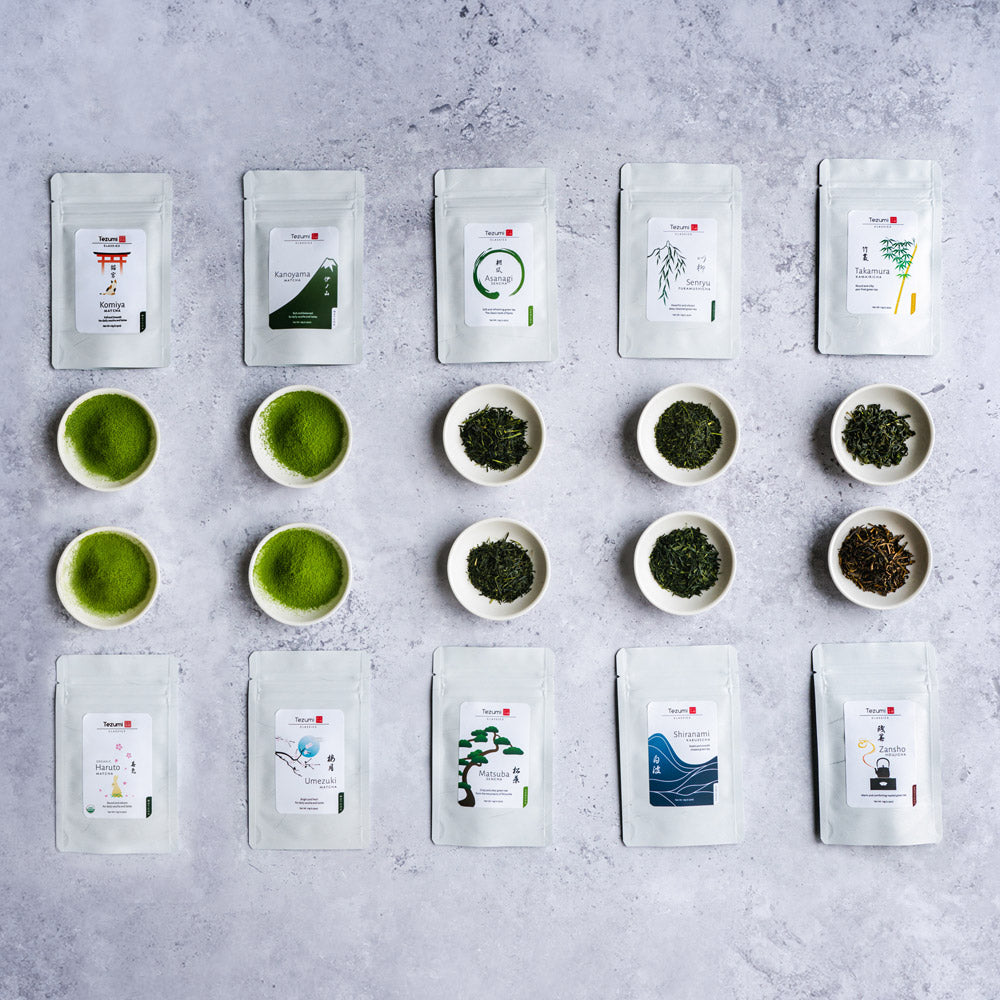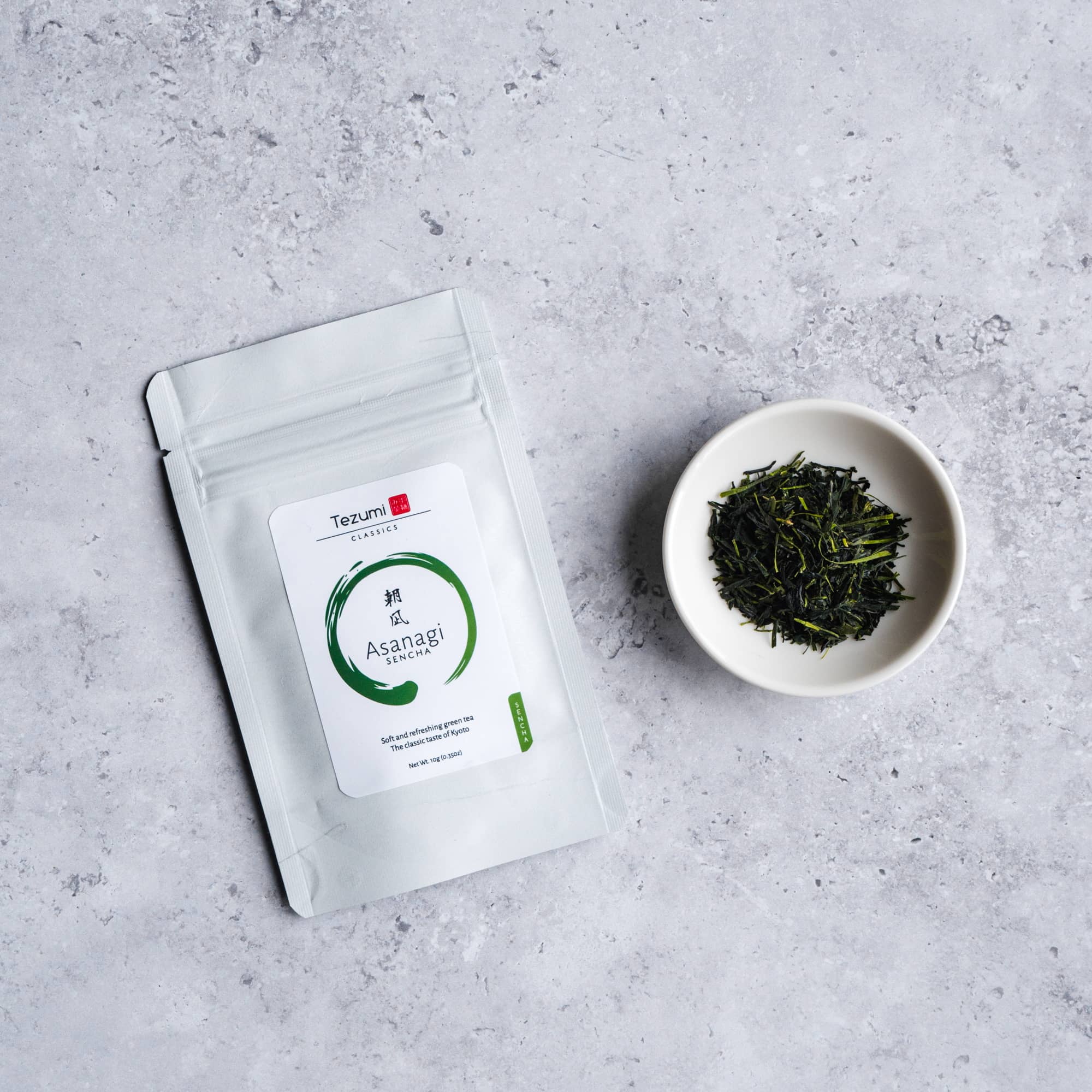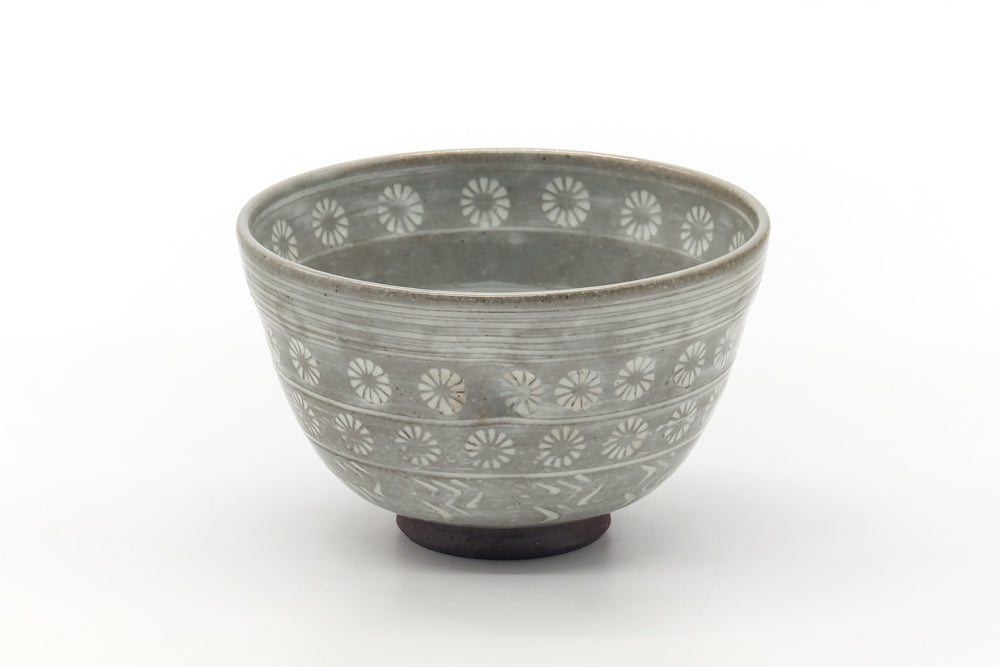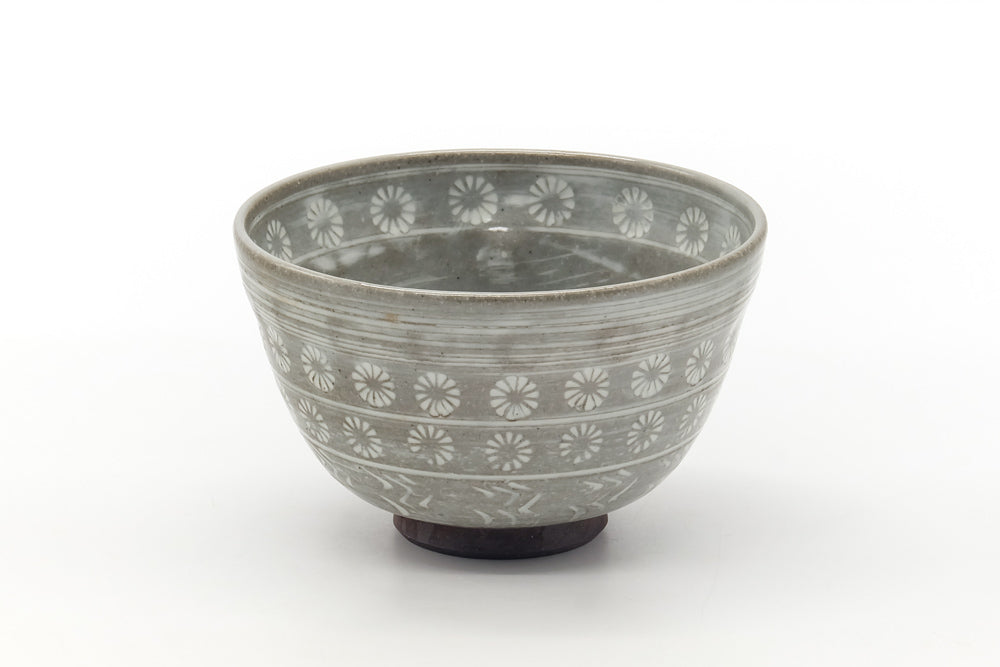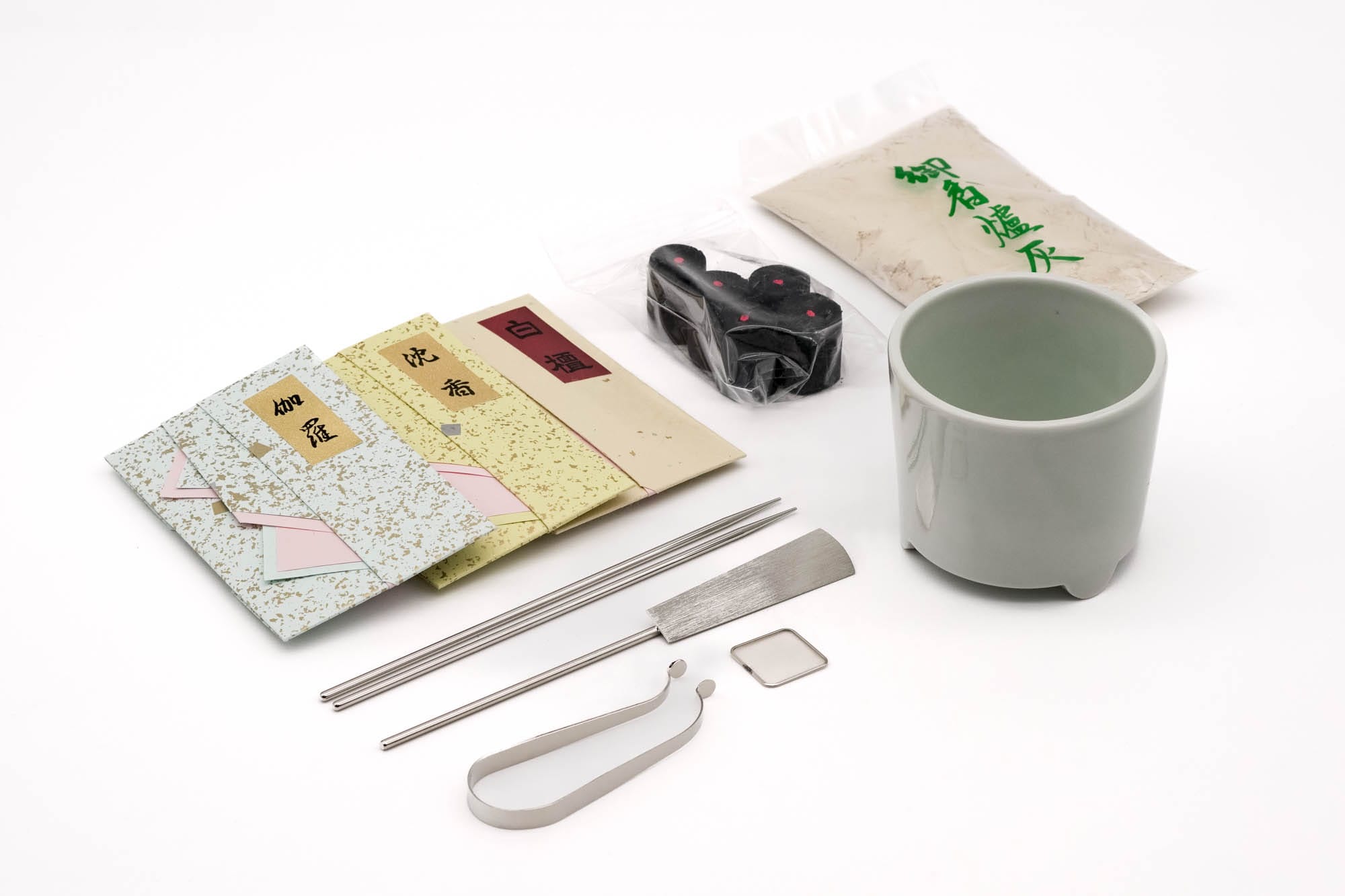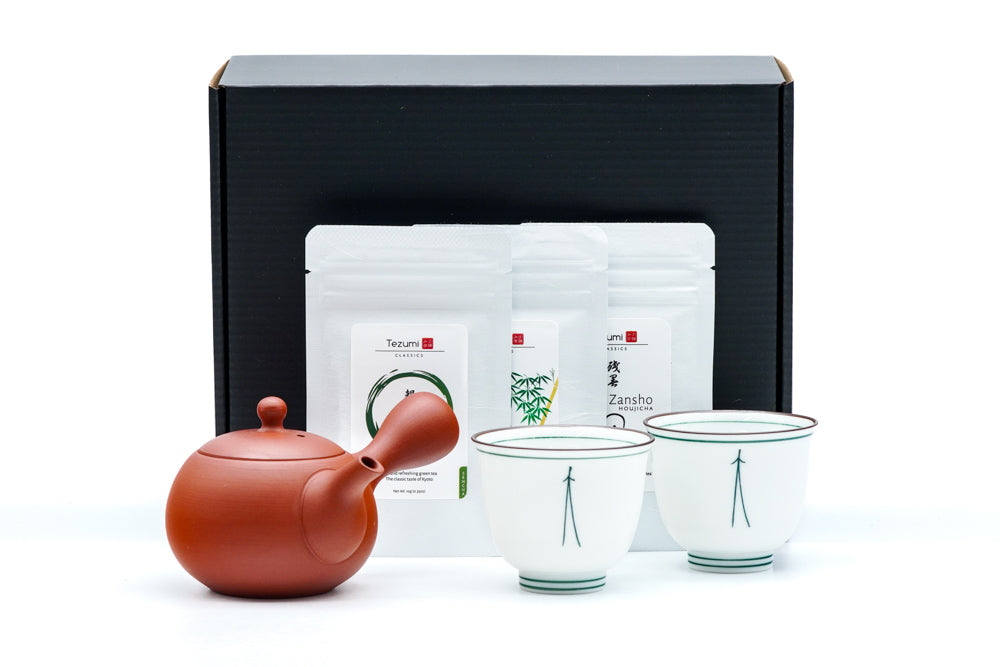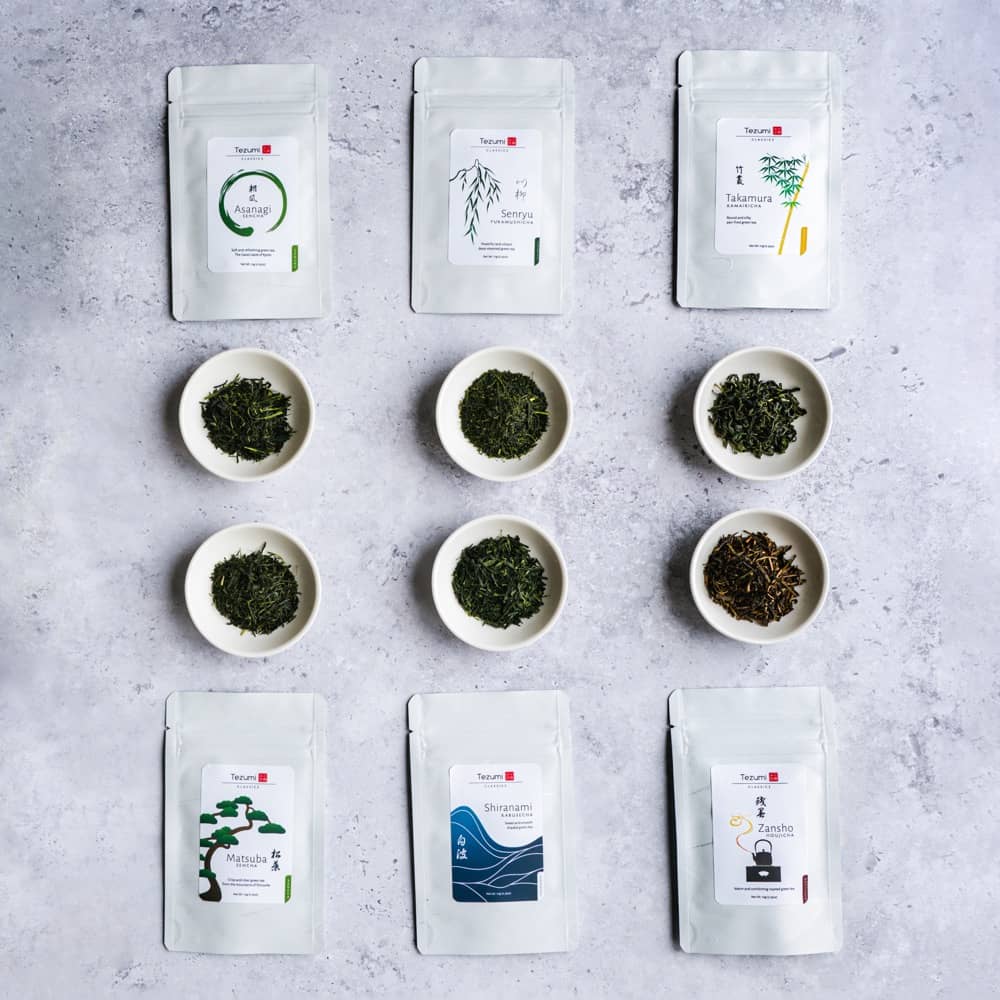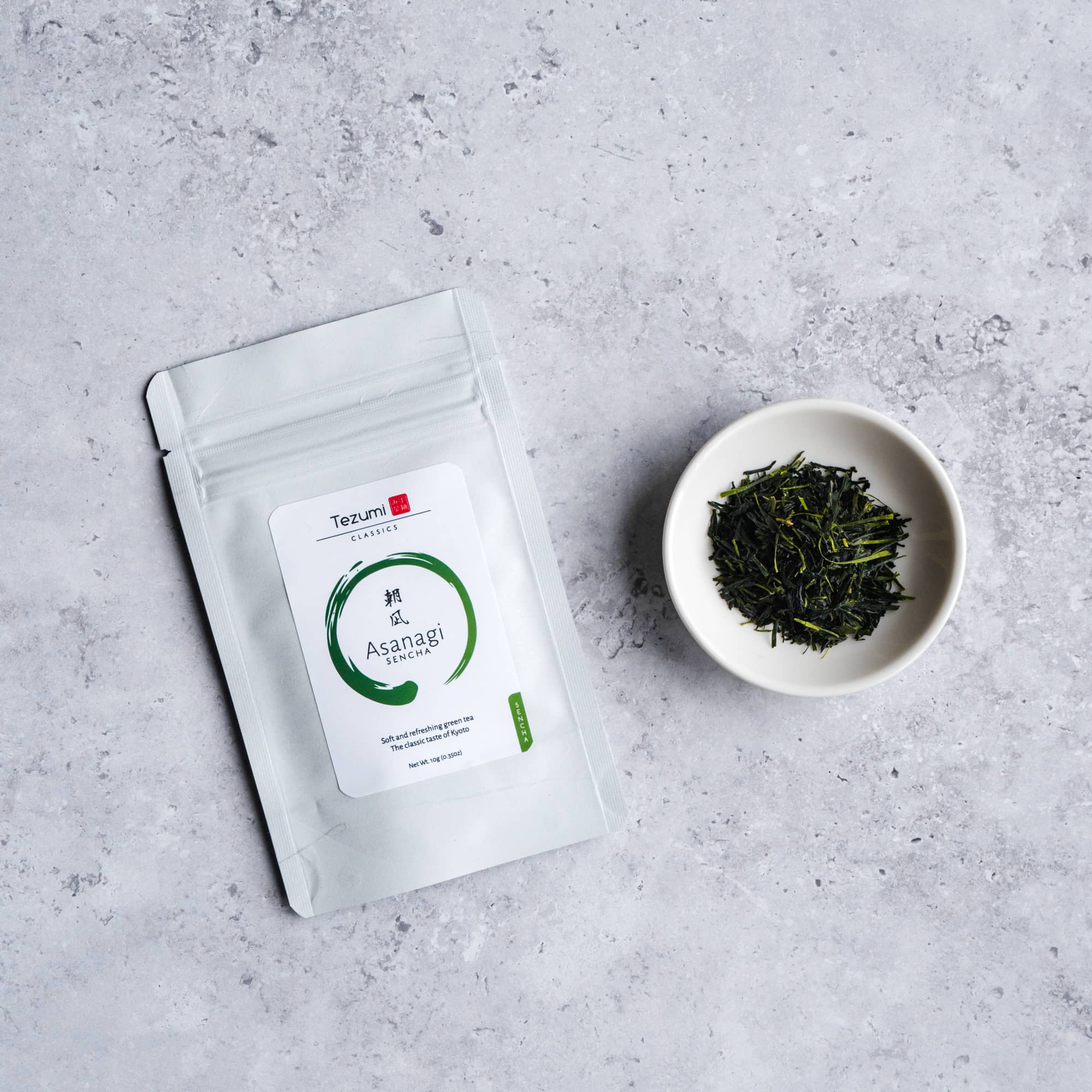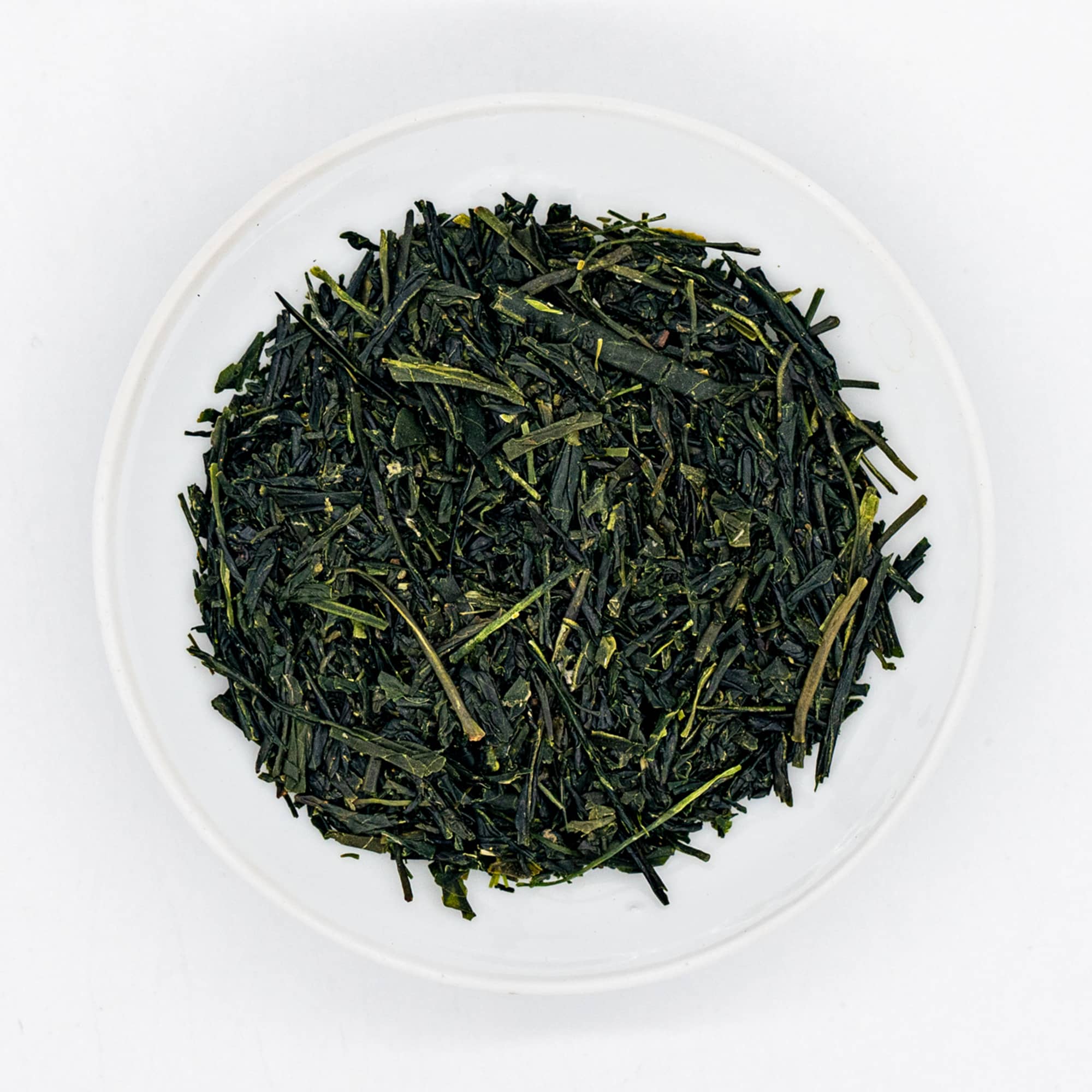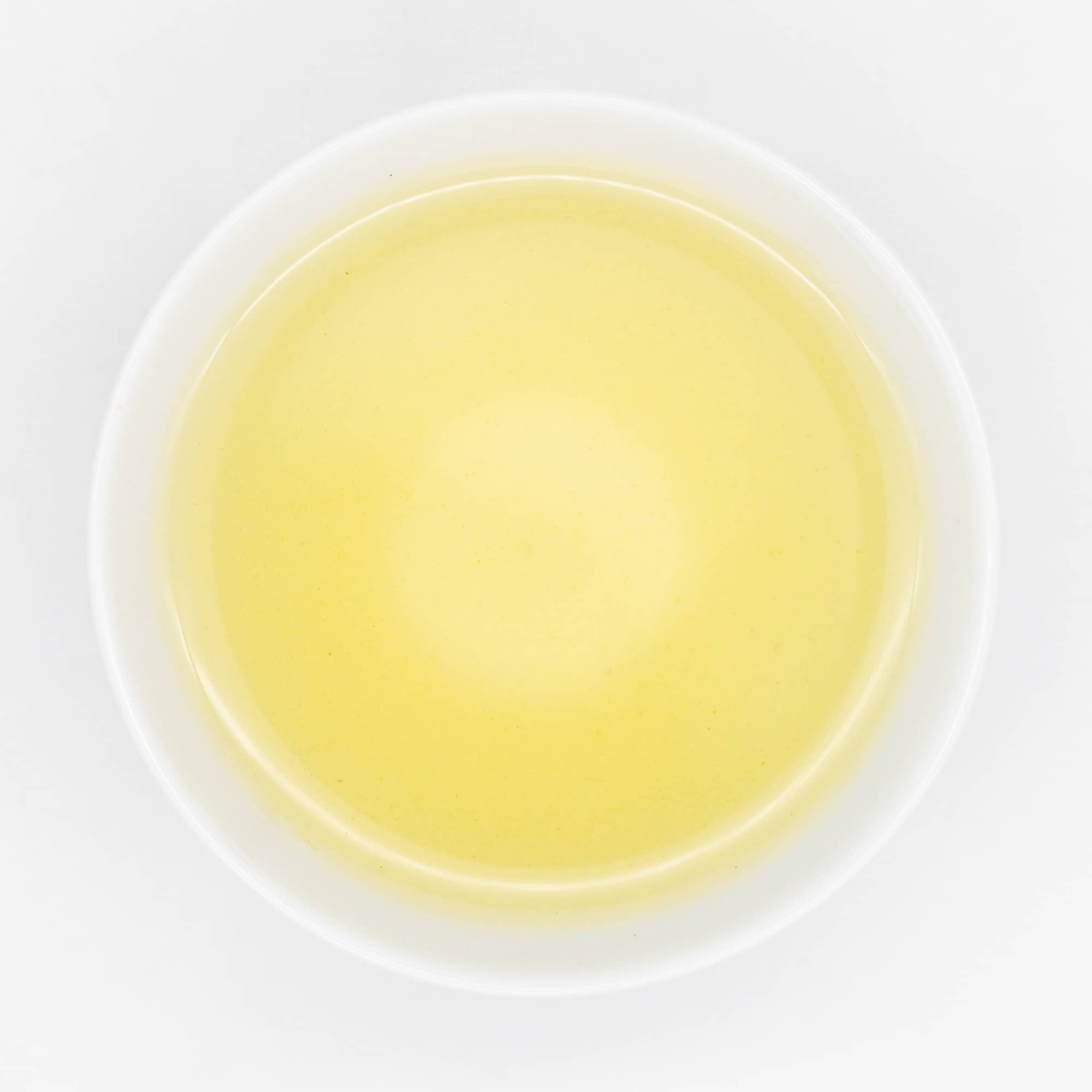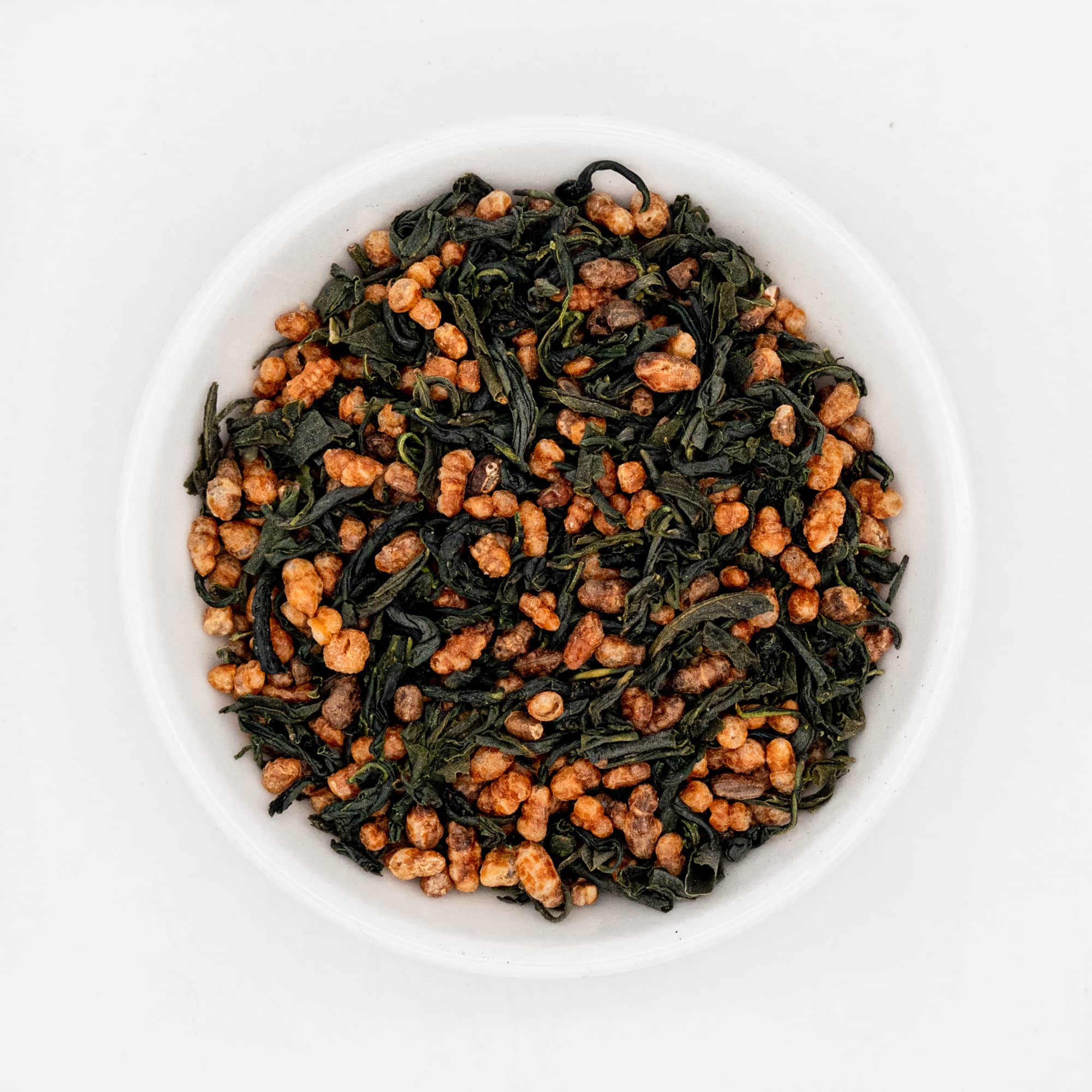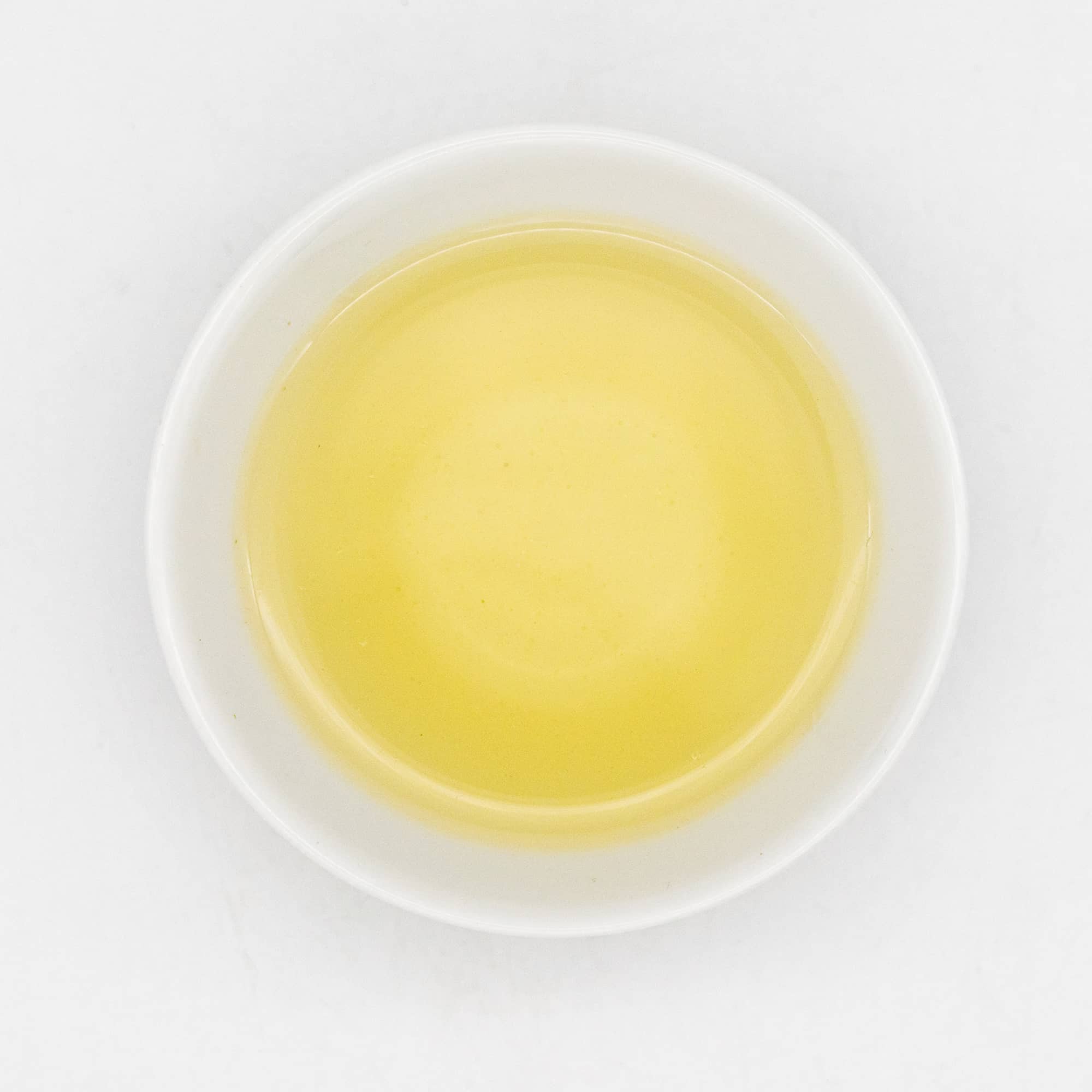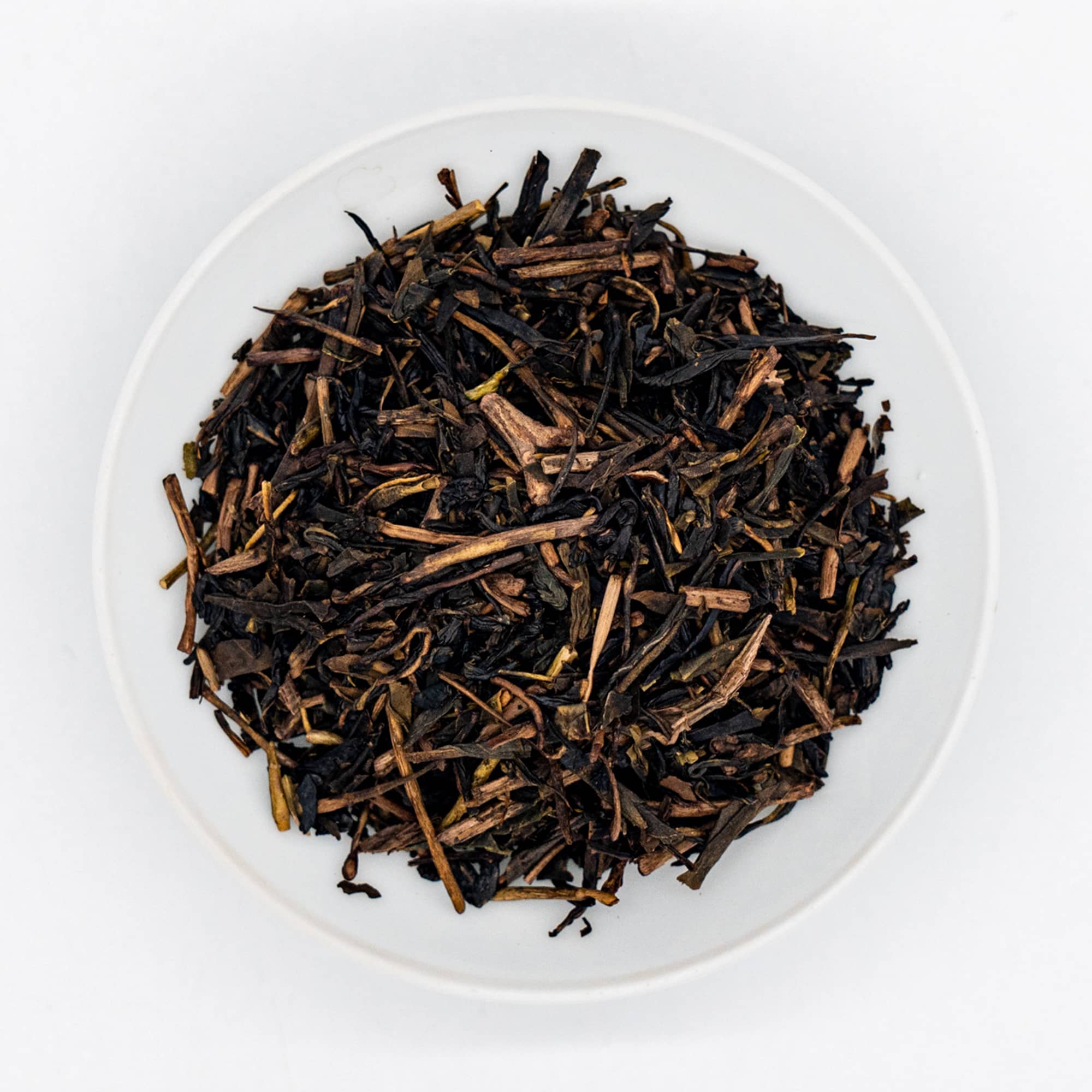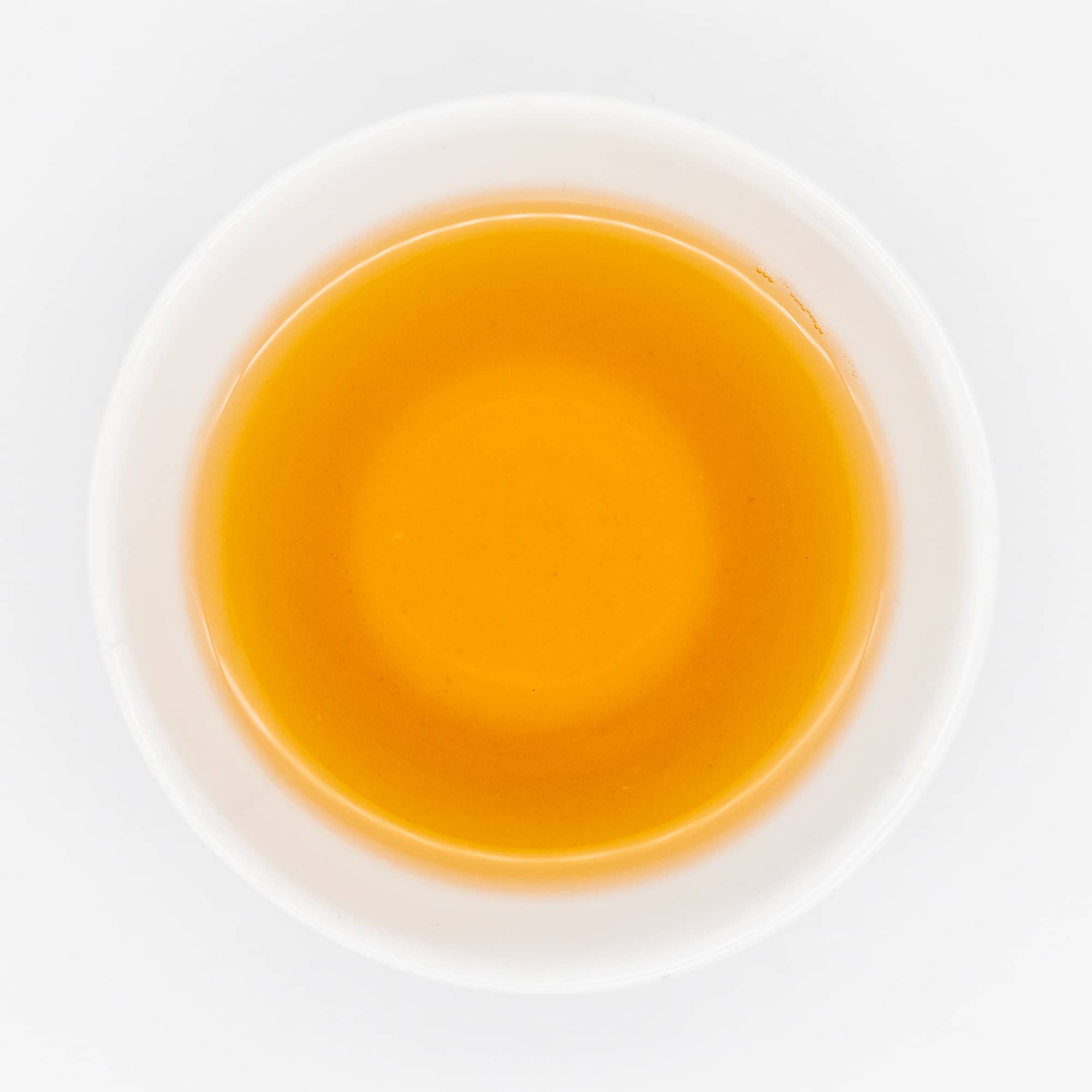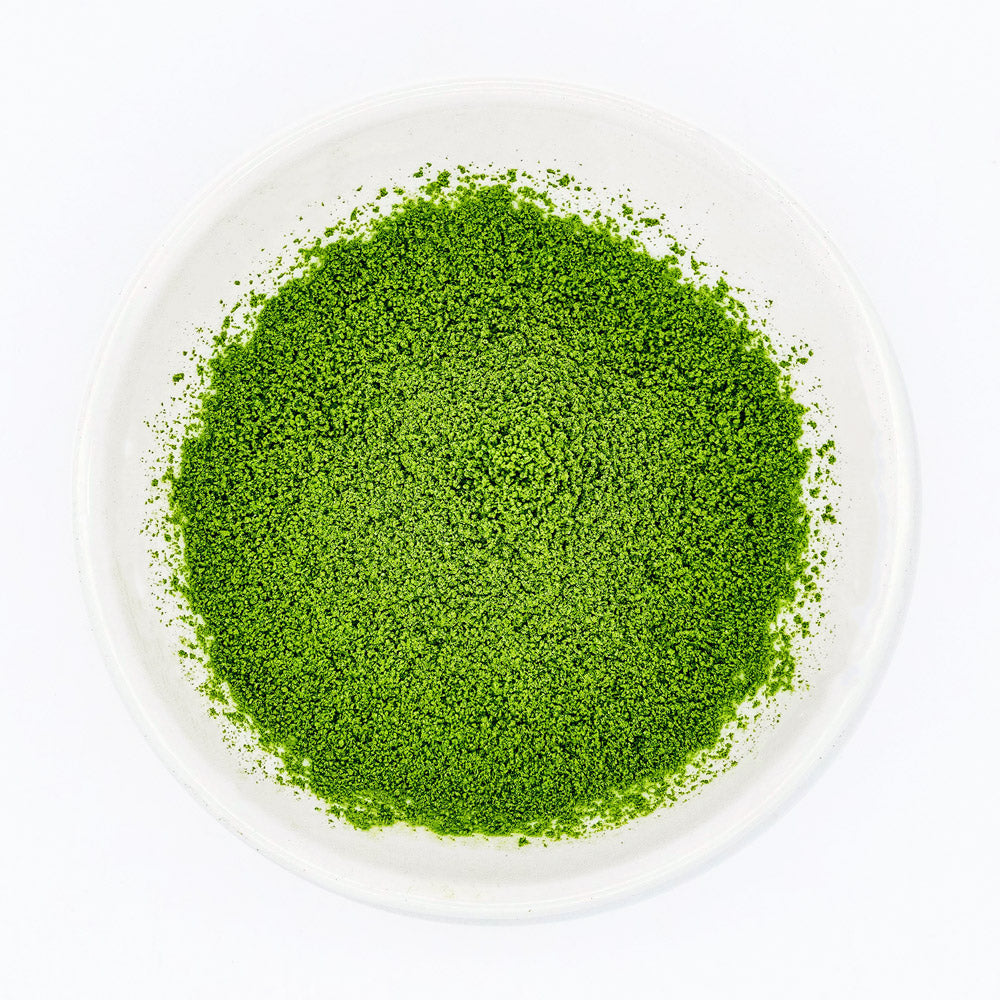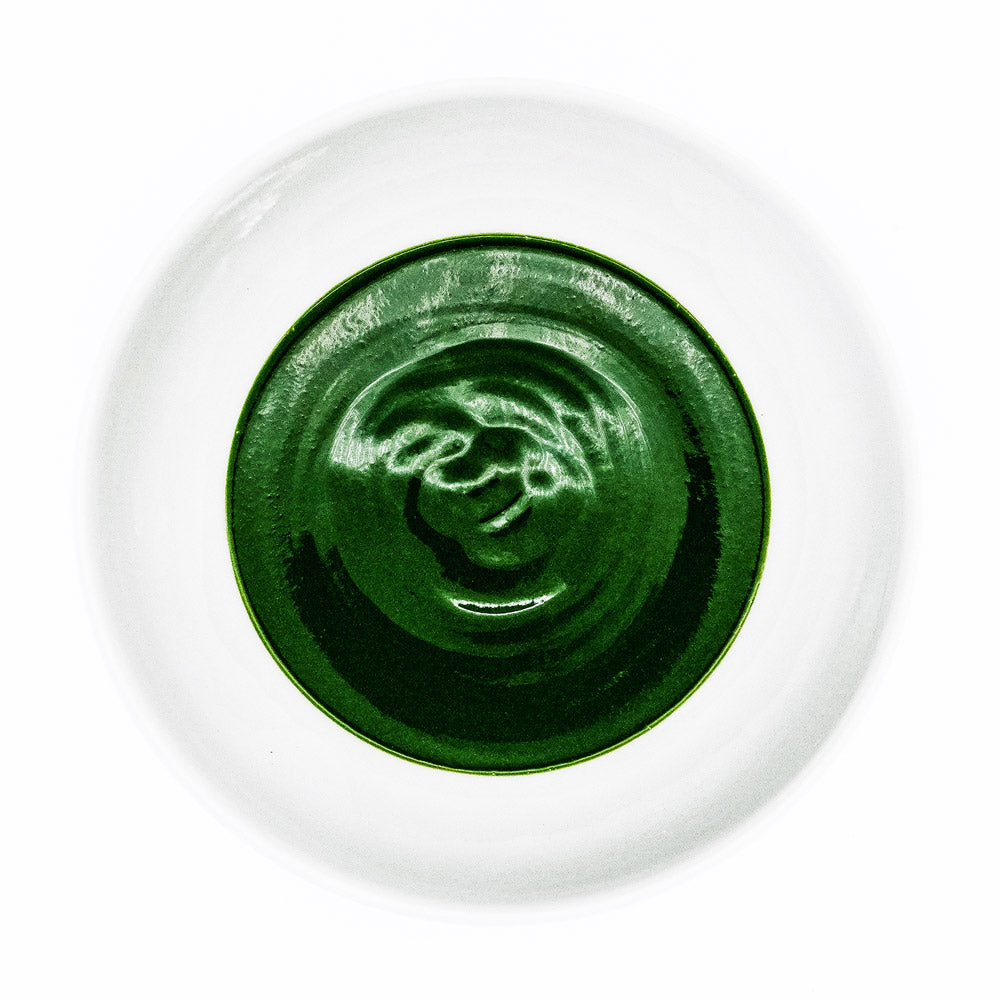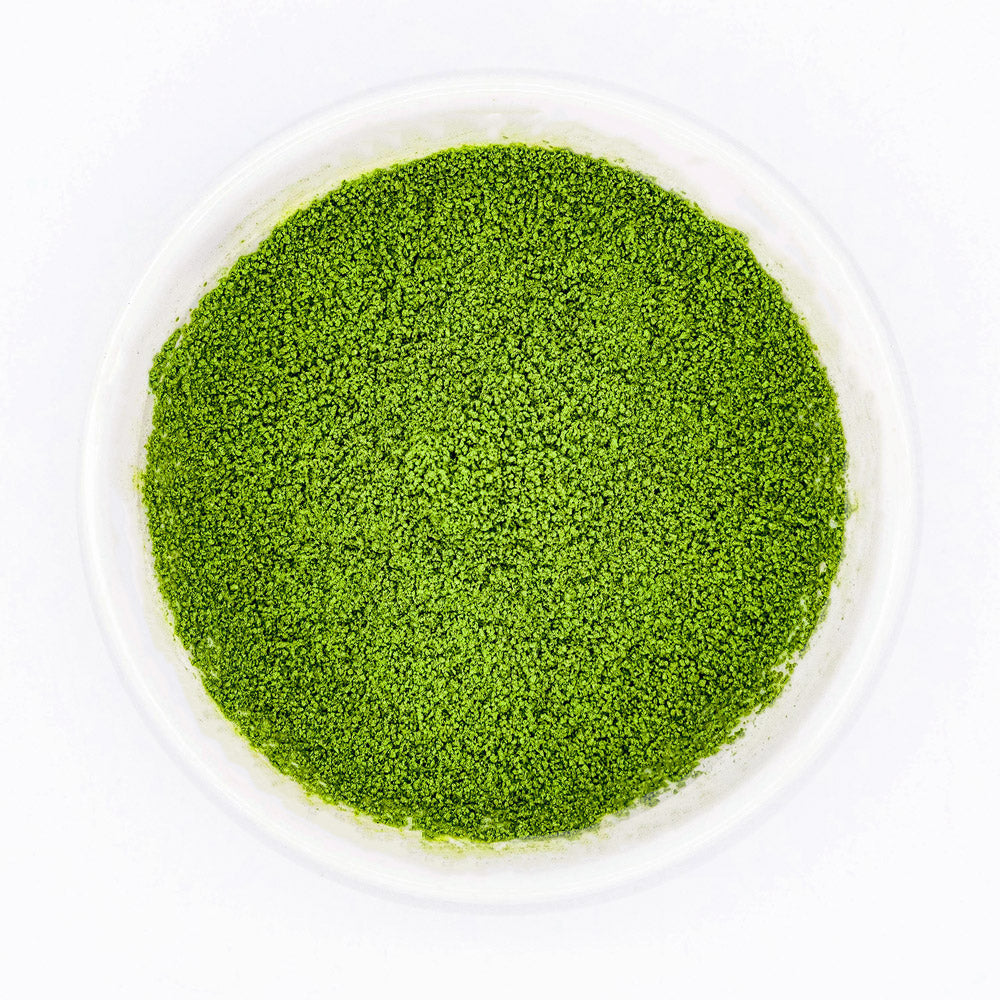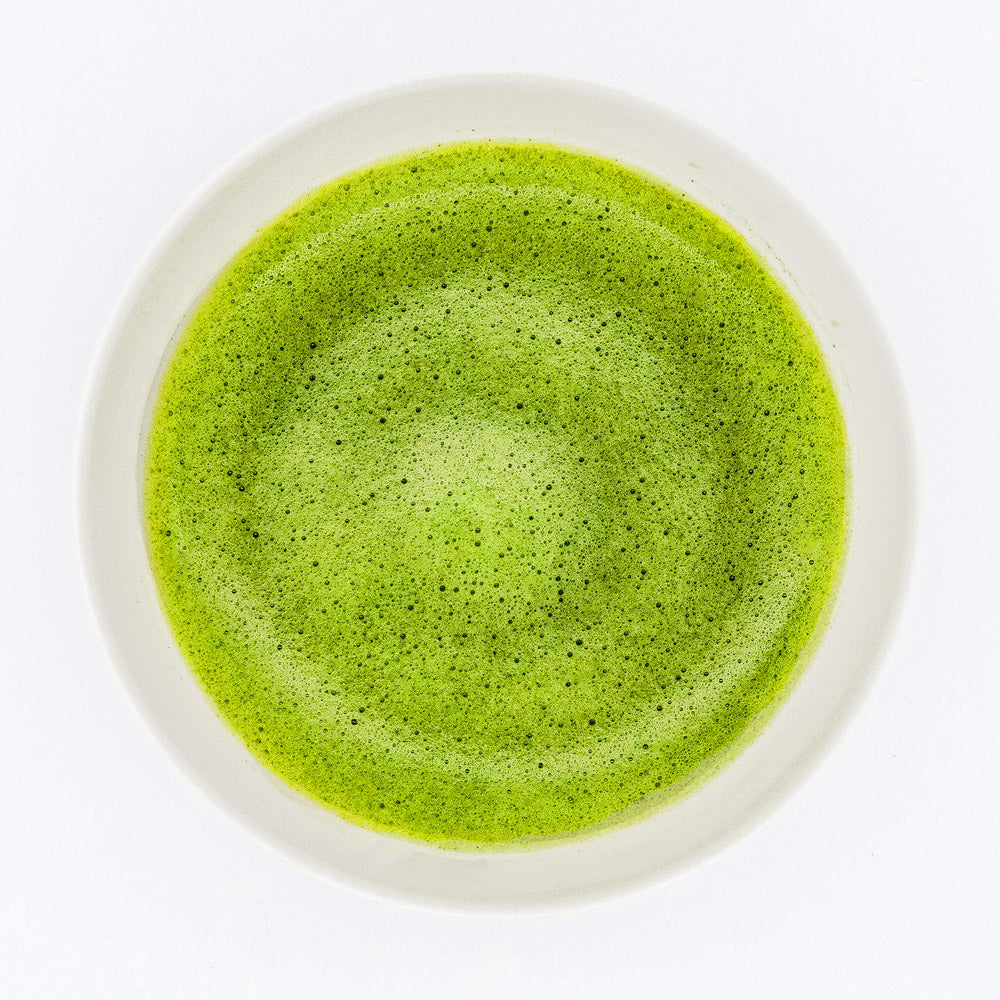The Many Shapes of the Matcha Bowl

While it may seem like the simplest of tea making utensils, the humble tea bowl or chawan (茶碗) holds a central place in Japanese tea culture and can be found in many different shapes and styles, each with their own history and purpose. Here we explore some of the more common shapes of chawan and what makes each one unique.
Wan-nari (椀形) - Wooden Bowl Shaped

One of the most common and widespread shapes, wan-nari bowls have a gentle curve from the foot to the lip, where the side of the bowl is usually vertical, resembling the shape of a Japanese wooden bowl (like those used for miso soup). While this shape is found all across the many teaware production areas of Japan, it is particularly common in Kyo-yaki bowls. The even shape of these bowls gives them great visual and physical balance and makes them very easy and enjoyable to whisk in and drink from.
Pictured here is an ice-crack celadon bowl by Okayama Junzō (岡山純三) of Tōsen Kiln (陶仙窯)
Hantsutsu-gata (半筒形) - Half-Cylindrical Type

With their straight sides and flatter bottom, hantsusu-gata chawan have a distinctive profile that is representative of Japanese tea bowls. Their shape also makes them easier to whisk matcha in, as the vertical walls help keep the tea from splashing over the lip. Like wan-nari bowls, this shape can be found in many different styles. However, a type of this shape is often associated with Raku chawan, like the one pictured here, where its geometric form is transformed into something altogether more organic and flowing, due to the hand-built nature of these Raku bowls.
Tsutsu-gata (筒形) - Cylindrical Type

This taller cousin of the half-cylindrical shape isn’t particularly common and is primarily used in the winter, where the tall walls help keep the tea warm in the colder months. Whisking tea in these bowls can be a challenge as it is difficult to reach the bottom with a normal-length chasen. Additionally, the relatively narrow opening of the bowl gives you little room to whisk. On the other hand, the tall shape makes it easy to keep the matcha from spilling out.
Pictured here is a tsutsu-gata Ame-Raku chawan.
Hatazori-gata (端反り型)/Komogai-nari - Curving Lip/Komogai Shape

These tulip-shaped bowls have an outward curving lip, which makes drinking out of them very easy and enjoyable. Another name for this shape is Komogai-nari: a reference to the curving lip bowls that were imported from the port city of Komogai in Korea. Though the distinction isn't commonly made, true Komogai chawan tend to be quite deep and round, shaped similarly to a wan-nari chawan, except for the flared lip. I would classify the bowl pictured here, a mishima chawan by Kengo Sugawara, as hatazori-gata, rather than komogai-nari
Ido-gata (井戸型) - Ido/Well Type

Like Komogai-nari bowls, Ido-gata bowls were named after the shape of a specific type of Korean bowl, called Ido chawan (井戸茶碗) in Japanese. These 16th century Korean bowls were originally made as humble rice bowls for peasants, but in Japan their simple ash glazes and uneven shapes made them one of the most coveted styles of matcha bowl, as Japanese tastes moved away from the perfection and ostentation of Chinese celadon and Tenmoku bowls, to a more rustic and modest aesthetic, called wabi. One of these original Ido bowls, the Kizaemon Ido (喜左衛門井戸) is a Japanese national treasure, and it is so well protected that it is rumored to cost $5000 to even look at it (when it's not on loan to museums).
The original Ido chawan can be roughly sorted in to three main shapes: 大井戸/O-ido (large Ido), 小井戸/Ko-ido (small Ido), and 青井戸/Ao-ido (blue Ido). O-ido bowls, like the Kizaemon, are large with a tall bamboo node-shaped foot (竹の節高台 - takenofushi koudai), a warm beige biwa/loquat coloured glaze, with slightly curved but roughly conical-shaped walls. Ko-ido bowls were similar, but smaller with a less pronounced foot. Ao-ido bowls also have shorter feet and have much straighter, conical walls without the gentle curve seen in O-ido bowls. The 'blue' in their name comes from their colder glaze colour like the white bowl picture above.
All Ido chawan generally have an irregularity in their form with a subtle ribbed or spiraled shape (called ろくろ目/rokurome), which shows the path of the potter's fingers while shaping the bowl on a pottery wheel.
While an original 16th century Korean bowl is hard to come across (and even harder to afford) many Japanese potters, especially Hagi-yaki artisans, have been inspired by this style and have made their own Ido-style bowls, either replicating their traditional ash and slip glazes or adding new glazes and textures to this classic shape.
Pictured above is a Hagi-yaki Ido chawan by Jōzan Watanabe.
Sugi-nari (杉形) - Cedar-Shaped
Named after their resemblance to the silhouette of a cedar tree (when turned upside down) Sugi-nari bowls also have a somewhat conical shape, however they are usually taller and more evenly formed than Ido-gata chawan
Dojimari-gata (胴締型) - Waisted Type

Often one of the most comfortable and ergonomic shapes to hold, dojimari-gata chawan are similar to hantsutsu-gata bowls, except for the addition of their distinctive waist, which gives them their name. This groove is the perfect place to put your fingers when holding these bowls with both hands.
Tenmoku-gata (天目型) - Tenmoku Type

The original tenmoku bowls were Jian ware tea bowls made in Song Dynasty China. These bowls had a dark coloured high-iron glaze that was praised for the way it contrasted nicely with the froth of whisked tea. While most of these glazes were a simple black, on rare occasions the conditions in the kiln were just right, producing beautiful metallic effects (one of which, called Yohen Tenmoku, was so rare that only the four bowls that have it are classified as Japanese national treasures). These Jian ware bowls were later brought into Japan where they acquired the name tenmoku (the Japanese reading of the name of the Chinese mountain Tian Mu) and many Japanese bowls were made in their style.
In addition to their famous glazes, these bowls also had a distinctive shape: conical with a narrow foot and finger groove just under the slightly flared lip. This shape can pose a slight challenge while making tea, with the small foot providing less stability than those found on wan-nari bowls.
Today, the term tenmoku is usually used either to refer to this style of bowl or to their high-iron glazes, while tenmoku-gata is generally used to describe bowls that have the shape of tenmoku chawan but not their iconic glazes.
Pictured above is a Yuteki Tenmoku chawan by Tanaka Kōsen
Hira-gata (平型)/Natsu Chawan (夏茶碗)- Flat Type/Summer Chawan

These chawan have a wide, flat shape which gives the whisked matcha a greater surface area, allowing it to cool down faster in the warm summer months. Their more open shape can make them a little more challenging to make tea in as it is easier to splash tea over the sides while whisking.
Pictured above is a Kohiki Hira Chawan by Yohei Nakamura
Badarai-gata (馬盥型) - Horse-bucket Type

These bowls are like a hybrid between hira-gata chawan and hantsutsu-gata chawan, with the straight walls and flat bottom of the hantsutsu-gata bowls and the wide and low shape of hira-gata chawan. These bowls also present a challenge to whisk in as their wide shape means the pool of tea is quite shallow.
Kutsu-gata (沓形) - Clog-Shaped

Kutsu-gata chawan were invented by the endlessly creative samurai tea master Furuta Oribe (古田織部) in the late 1500s. In his unique aesthetic of hyouge, he pushed the boundaries of the traditional notions of form when it came to tea ceremony utensil. His preferred tea bowls were intentionally warped and distorted into interesting, asymmetrical, and dynamic shapes - some had two sides squished in so they became oblong, others were squished on three sides resembling a tricorn hat or a wooden clog, which earned them the name kutsu-gata.

This shape is most commonly found on Oribe chawan, such as the Kuro-Oribe chawan by Katō Hiroshige pictured above.

These are just some of the most common shapes of tea bowls, but of course, as with any art form, there are no hard and fast rules. Ceramic artists are always experimenting with new forms and putting their own spin on classic styles. Shape is just one of the many aspects, both practical and aesthetic, to take into account when choosing a chawan, alongside things like colour, glaze, texture, weight, and balance. But most of all, it's most important to choose a bowl that speaks to you. After all, it is this connection that makes a bowl a chawan.
Explore our ever changing collection of unique chawan here.



